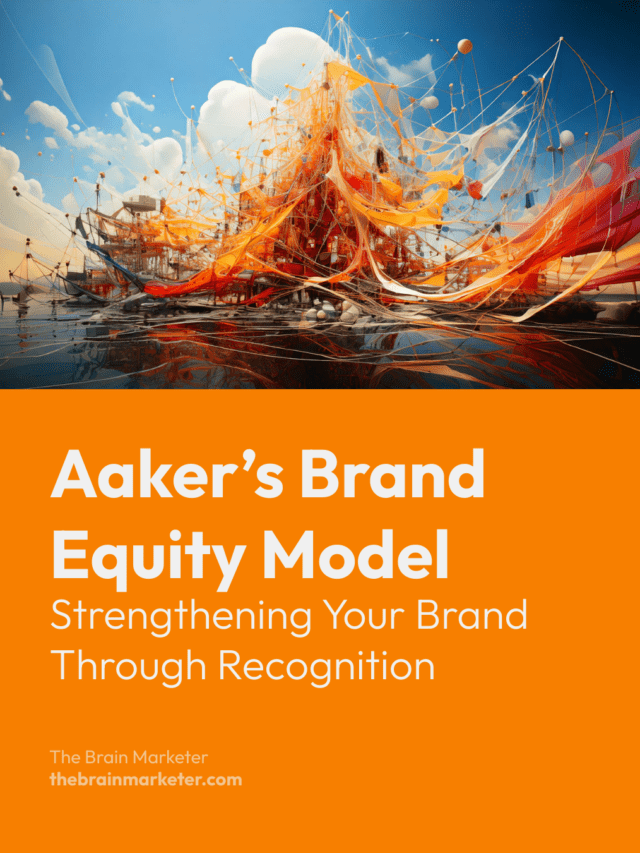David Aaker’s Brand Equity Model provides a strategic framework for brands aiming for long-term success by shaping consumer perceptions. The model emphasizes five key elements: brand awareness, brand loyalty, perceived quality, brand associations, and proprietary assets. Neuromarketing complements these elements by applying cognitive neuroscience principles to deepen consumer engagement and fortify loyalty.
Key Takeaways
- Brand equity integrates awareness, loyalty, perceived quality, brand associations, and proprietary assets.
- Neuromarketing uses neuroscience to heighten emotional and cognitive consumer responses.
- Effective neuromarketing consistently activates neural pathways, enhancing recall and building lasting brand loyalty.
🎙️ Unpack the Topic with this Podcast
Neuromarketing with Aaker’s Brand Equity Model
Neuromarketing examines how consumers’ brains respond to marketing stimuli, optimizing strategies to effectively influence consumer behavior. Aaker’s Brand Equity Model’s emphasis on emotional triggers and cognitive biases aligns perfectly with neuromarketing techniques. Leveraging these insights enhances the five pillars of brand equity, fostering deeper emotional connections and sustained loyalty.
The Five Pillars of Aaker’s Brand Equity Model
1. Brand Awareness
Brand awareness reflects consumers’ ability to recognize and recall a brand, improved by consistent exposure. Neuromarketing research demonstrates that uniform visuals activate brain regions involved in pattern recognition, thus increasing memorability. Coca-Cola’s iconic red-and-white branding exemplifies this, creating a strong, lasting presence in consumers’ minds globally.
2. Brand Loyalty
Brand loyalty measures consumers’ ongoing preference for a specific brand, primarily driven by positive emotional experiences. Neuromarketing reveals that rewarding emotional interactions stimulate neural reward circuits, enhancing consumer attachment. Starbucks’ personalized loyalty program exemplifies this, triggering dopamine release and significantly boosting customer loyalty.
3. Perceived Quality
Perceived quality hinges more on consumer perception and cognitive biases than actual product performance. Neuromarketing insights show that messaging emphasizing reliability and consistent excellence activates trust networks, strengthening quality perceptions. Apple’s meticulous design approach highlights its commitment to premium quality, thereby justifying its premium pricing.
4. Brand Associations
Brand associations encompass the emotions and concepts consumers associate with a brand. Neuromarketing emphasizes the power of emotional storytelling, activating the brain’s limbic system and forging strong emotional connections. Disney masterfully employs emotional narratives, evoking joy and nostalgia to solidify long-lasting consumer relationships.
5. Patents and Proprietary Assets
Patents and proprietary assets confer competitive advantages and reinforce brand credibility. Neuromarketing underscores the importance of highlighting innovation, enhancing consumer perceptions of a brand’s authority and exclusivity. Dyson effectively emphasizes its patented technology, reinforcing its image as an innovative market leader.
Strategic Neuromarketing for Strengthened Brand Equity
Brands can strategically leverage neuromarketing across each pillar of Aaker’s Model. Maintaining visual consistency enhances recall, personalized interactions boost emotional loyalty, clear reliability messaging builds trust in perceived quality, engaging storytelling solidifies brand associations, and spotlighting unique innovations asserts authoritative leadership through proprietary assets.
Conclusion
Integrating neuromarketing techniques into Aaker’s Brand Equity Model enables brands to powerfully engage consumer emotions and cognitive processes, enhancing brand recognition, loyalty, and perceived value. By employing neuroscientific insights, companies can build resilient, influential brands that secure long-term consumer loyalty and superior brand equity.
Sources
- Aaker, D. A. (1991). Managing Brand Equity. New York: Free Press.
- Renvoisé, P., & Morin, C. (2007). Neuromarketing: Understanding the Buy Buttons in Your Customer’s Brain. Thomas Nelson.
- Ariely, D. (2008). Predictably Irrational: The Hidden Forces That Shape Our Decisions. HarperCollins.

Vincent Heimann is a marketing project manager and neuromarketing enthusiast. He founded The Brain Marketer to bridge neuroscience and marketing through accessible, science-based content. With over 10 years of experience in digital strategy, UX/UI and communication, he shares practical insights to help brands connect with the human brain — ethically and effectively

